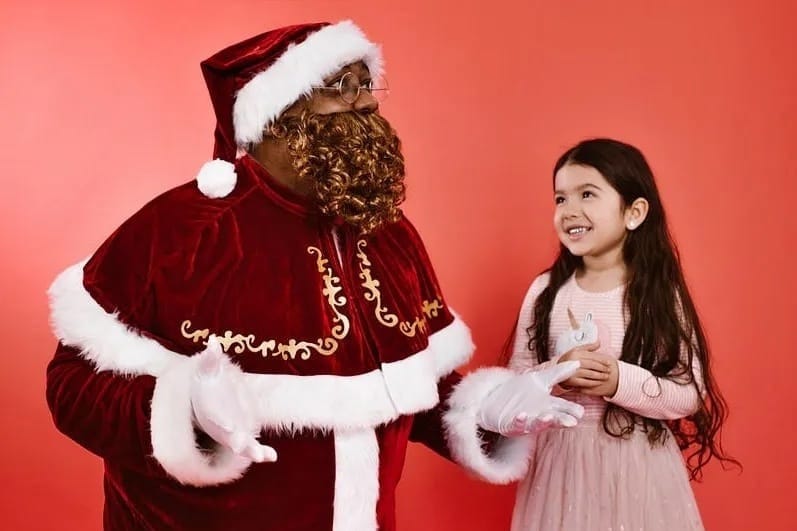Every year around the Christmas holidays, a debate regarding the race of Santa Claus threatens to surface in the media. Back in 2017, Fox News anchor Megyn Kelly proclaimed on national TV that Santa “is what he is, which is a white man." She said that statement in a tone that sounded like anyone saying otherwise is railing absurdly against “traditional values”. In other words, they’re “woke".
The term “woke” is employed in debates of this nature to attempt to shut down meaningful, valuable perspectives from African-Americans and other people of color. The last thing conservative whites want to address sincerely is the reasons in America for the socioeconomic disparities between their communities and African-American ones. One of these disparities is the lack of positive representation in the media and American culture. For example, if a crime is reported on the local news, the photos of African-American suspects are shown during the report more often than white suspects. This is an example of negative representation. Viewers will likely develop a negative bias towards African-American citizens if this is the most sensational impression viewers have of them. No amount of education puff-piece stories will completely erase this perception.
This bias comes into play when considering cultural personas such as Santa Claus. Let’s imagine Santa’s typical work schedule. He loads up his sleigh and delivers toys and goodies to every nice child in the world. Wait…! He enters every child’s home to deliver gifts while every family member is unaware of his visit. From the biased perspective I previously mentioned, mainstream conservative Americans would have an issue explaining to their children how a Black Santa 🎅🏾 visits their homes while they’re asleep. Since racism and biases are learned traits, this conversation between parents/guardians and children would be one that would go down in history books if it could be documented in some homes.
For anecdotal evidence of this cognitive dissonance in many white American families, look no further than the experience of African-American delivery drivers and African-American neighbors in predominantly white neighborhoods. In this first case, a delivery driver was stopped and prohibited from leaving a gated neighborhood by a white neighbor. These trucks are clearly marked as last-mile package transporters, yet African-American drivers experience hostilities from random white residents while out doing their jobs. In another case, a FedEx driver “allegedly” was fired upon by two white people while out doing his job. The truck the driver used had bullet holes in it as well as some packages. The perpetrators were arrested and went on trial for their crimes. In another case, a white woman blocked an African-American Postmates delivery driver from entering an apartment complex to complete his food delivery. In the video recorded by the delivery guy, the woman tries to exercise some perceived privilege to tell him “You don’t belong here!” These are all situations where a Black person is trying to complete a job task in public and is confronted by a ridiculous individual claiming some “homestead" rights that he or she doesn’t possess.
Finally, African-Americans must also deal with “existing while Black” situations outside of their workplace. Moments such as this appear in news coverage periodically. In 2021, Jonathan Pentland was filmed in a viral video assaulting a young African-American man for simply being on the white man’s street. Pentland didn’t recognize the young Black man. He felt empowered by this circumstance to terrorize the stranger by asserting authority that he didn’t have from a legal standpoint. The young Black man, to his credit, didn’t return the rage in the encounter. To recap, a white man assaulted a black man because the first didn’t recognize the second as a neighbor. The young Black man wasn’t trespassing on Pentland’s property. He stood on the public sidewalk in front of Pentland’s home and was berated for that.
All of these incidents were outside in public view. All focused on an African-American in the “domain” of white citizens. That African-American citizens had every right to be in the place they put themselves even though the white person objected to the “other" individual’s presence. Considering all of this anecdotal evidence, the idea of a Black Santa is an incredulous tradition for some white families to adopt. Consider one documented example of a 1960s white community expressing objections to a Black Santa. Drama was raised at the city’s Christmas parade because the local NAACP chapter had a Black Santa on its float. The following year, the parade rules were “updated” to address what could be displayed on floats, which were obviously tied to the prior year’s actions of the NAACP. Pockets of communities with this mindset still thrive in the United States to the present day, unfortunately.
